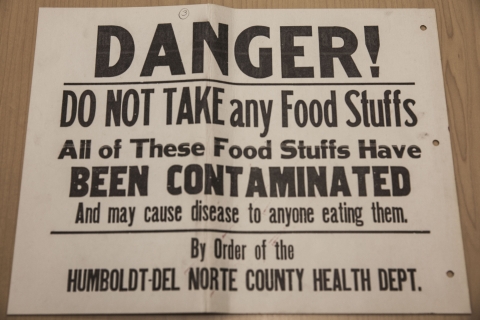UC Cooperative Extension Archive: Past, Present, and Future
Things are heating up at the UC Cooperative Extension Archive! July marks the start of our $308,900 three year grant from the National Historical Publications and Records Commission for “A Century of Impact: Documenting the Work of the Cooperative Extension in California's Counties.” Over the next three years, we will appraise, process, and digitize historical material from 20 county offices, with the goals of:
- Digitizing approximately 180,000 pages and 2,000 photographs from California Cooperative Extension reports.
- Arranging and describing at least 100 linear feet of material from 20 county extension offices. (One banker box is the equivalent of a linear foot).
- Creating a scalable demonstration project using the records to engage Merced County 4-H students in tagging and curating digital records.
- Testing the use of natural language processing (NLP) tools to perform automated named entity recognition for use in creating controlled access vocabularies.
- Developing a searchable interactive map of county information and digitized photos and documents.
- Publicizing the project through events, such as the World Ag Expo and these monthly blog posts.
What have we been up to in 2018?
We have been busy this year, below is a brief overview of what we have been working on in 2018.
- We had a booth at the World Agriculture Expo in Tulare, CA to promote the UC Cooperative Extension Archive.
- We performed two site visits:
- In April, I created an inventory for Stanislaus County Office, where I found an estimated 126 linear feet of archival material.
- In May, I assessed 617 linear feet of material at Tulare County Office and found 208 linear feet of archival material.
- Once the weather cools off, we will pack and ship the material back to UC Merced.
- We hired a Digitization Coordinator, Kelsey Raidt, to help manage our digitization workflows for scanning and conversion of archival information resources and loading of digital objects and metadata in the library’s digital asset management system. Kelsey has her MA in History from Middle Tennessee State University, where she worked as a Graduate Assistant in the Albert Gore Research Center, and her BA in History from Arkansas State University. She comes to us from the Center of Military History at the JFK Special Warfare Museum as a Museum Database Technician. She previously has worked as an Archival Digitization Specialist for the Virginia Department of Vital Statistics. With Kelsey’s experience with digitization and archival processing and preservation, Kelsey will be a huge asset to the UC Cooperative Extension Archive.
- We have been working with the California Digital Library and HathiTrust to provide access to UC ANR publications in HathiTrust.
- We are almost finished digitizing the Ventura County and Merced County Annual Reports and have started digitizing Humboldt County records.
- We completed processing of Fresno County and Santa Barbara County collections.
What’s in store for the rest of 2018?
We have an ambitious schedule planned for the rest of 2018, with our focus on:
- Completing the appraisal and inventory for offices in San Joaquin County, Kings County, Kern County, and potentially San Diego County and Imperial County.
- Uploading the rest of Merced County, Ventura County, and Humboldt County’s digitized content to Calisphere. Check the blog for announcements on when digitized content has been uploaded.
- Completing and uploading collections guides for Fresno County, Santa Barbara County, and Madera County.
- Performing archival processing and identifying items for digitization for Madera County and Tulare County.
- Releasing videos on using the collections guides on the Online Archive of California and digitized content on Calisphere.
Join us next month for a video about how to use collections guides in the Online Archive of California.













